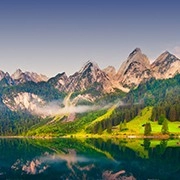Solar & Wind Surge

A friend recently told me he was finally switching his home to solar power. "It just makes sense now,"he said. "It's cheaper, and I feel like I'm doing something good for the planet."That stuck with me. Renewable energy used to feel like an idealistic dream—clean, but expensive and unreliable.
Today, it's moving into the mainstream.
But the big question remains: Can solar and wind energy truly replace traditional power sources at scale? Let's explore where the real potential lies—and what challenges we still have to face.
1. The Cost of Solar and Wind is Falling Fast
1. Solar power: The price of solar panels has dropped more than 80% over the last decade, according to the International Energy Agency (IEA). In many sunny regions, solar is now cheaper than coal or gas, even without subsidies.
2. Wind power: Onshore wind is now one of the lowest-cost electricity sources worldwide. Offshore wind is catching up fast, especially in regions like the North Sea and parts of the U.S.
3. Levelized Cost of Energy (LCOE): When comparing the total lifetime cost of energy generation, solar and wind have reached parity—or even advantage—over fossil fuels in most countries.
In practical terms, this means utility companies, not just eco-conscious consumers, are now embracing renewables for financial reasons—not just environmental ones.
2. Clean, But Also Scalable?
The clean energy argument is clear. Unlike fossil fuels, solar and wind don't produce carbon emissions during operation, which makes them crucial in climate goals. But the question isn't just about cleanliness—it's about capacity.
Can they deliver reliable, large-scale energy? Here's what we know:
• Solar farms can power entire towns during daylight hours. In 2023, California saw solar power provide nearly 100% of its electricity demand for several hours on multiple days.
• Wind turbines are incredibly productive in high-wind regions. Denmark already gets over 50% of its electricity from wind.
However, the real challenge comes when the sun sets or the wind dies down. That's where energy storage and smart grid management step in.
3. The Energy Storage Equation
No renewable energy discussion is complete without tackling storage. Because solar and wind are intermittent—they don't generate power 24/7—storage is essential for a reliable system.
What's happening right now:
1. Battery tech is improving: Lithium-ion battery prices have dropped by 89% since 2010. Tesla's Powerwall and other home batteries are more accessible now.
2. Grid-scale storage is expanding: Countries are building massive battery farms that can power cities for several hours.
3. Alternative storage is in the works: From gravity-based systems to green hydrogen production, researchers are developing ways to store renewable energy for days—or even months.
According to Dr. Leah Stokes, energy policy expert and professor at UC Santa Barbara:
"We're not waiting for a breakthrough. The technologies exist—we just need the will to build them at scale.”
4. Infrastructure and Policy Still Matter
Even the cleanest and cheapest energy needs the right infrastructure to deliver power to homes and businesses. This includes:
• Modernizing grids to handle variable inputs from solar and wind.
• Streamlining permits for new projects—some wind farms take years to approve.
• Incentivizing storage and backup systems to make renewables more consistent.
Fortunately, countries like Germany, Spain, and the U.S. are passing green energy incentives and climate investment packages that support these needs.
5. Local Power: Solar on Rooftops, Wind in Fields
Not all renewable energy needs to come from massive farms. Distributed generation—like rooftop solar—is growing fast.
Why it matters:
• Households and small businesses gain energy independence.
• It reduces transmission losses since power is used close to where it's generated.
• It democratizes energy—people become both consumers and producers.
In some areas, programs even allow users to sell excess energy back to the grid, reducing bills or even earning income.
So, Can Renewables Power the Future?
Here's the honest answer:
Yes—with the right mix of technology, policy, and infrastructure, solar and wind can carry a major share of the global energy load.
But no, it won't happen overnight. There are still hurdles to solve, especially around storage, land use, and updating old electrical grids. Yet progress is accelerating fast—and the direction is clear.

Would You Go Renewable?
Lykkers, have you considered putting solar panels on your roof, or switching to a green electricity provider? Maybe you've already taken the leap?
The future of energy is being shaped today—by the choices governments make, by the tech companies develop, and by what each of us decides to support or invest in. Whether you're a homeowner, renter, or business owner, your decisions matter in this shift.
And maybe that's the real power behind solar and wind—not just in how they generate electricity, but in how they give everyday people a role in the energy revolution. ☀️💨

 · News team
· News team